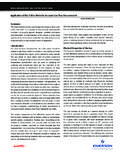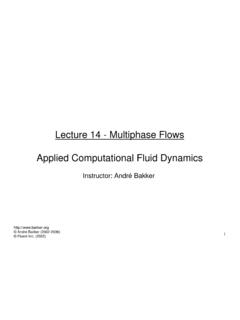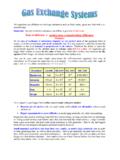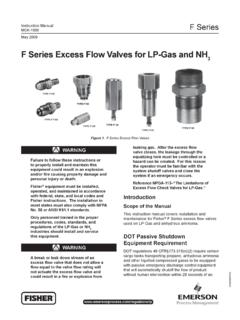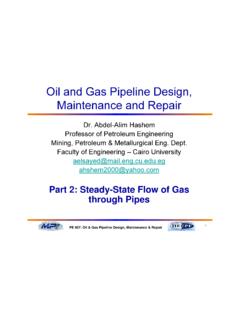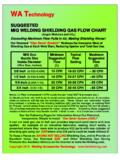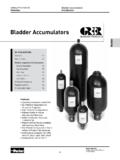Transcription of FLUE GAS RECIRCULATION - combustionexperts.com
1 flue gas RECIRCULATION FOR STOKER BOILERS Calpenn Associates, Inc. (A Kenneth L. Maloney, PhD, Inc. Company) flue gas RECIRCULATION SYSTEMS FOR STOKER BOILERS flue gas RECIRCULATION (FGR) is a patented combustion modification process for stoker-fired boilers that will increase boiler efficiency and steaming capacity, while at the same time reduce particulates, stack opacity and NOx emissions. Emissions of sulfur oxides (SOx) can also be controlled with FGR when limestone is added to the fuel in the form of a coal/limestone pellet. A SYSTEM THAT PAYS FOR ITSELF Operators of stoker boilers, particularly those installed several years ago, must contend with the changing environmental regulations and increasing fuel costs, in addition to the usual operating problems.
2 The Calpenn Associates, Inc. (a sister company to Kenneth L. Maloney, PhD, Inc.) flue gas RECIRCULATION system provides a unique solution that will solve emission and operational problems while paying for itself with improved boiler efficiency. Simple payback periods of 1-2 years are common for many of our installations. The FGR system can be retrofitted to all types and sizes of stoker-fired boilers including spreader stokers with traveling grates, vibrating grates and dump grates as well as traveling chain grates and underfeed stokers with single, double and multiple retorts.
3 The FGR process is applicable to all fuels that are fired on a grate including coal, wood, biomass, tires, e- fuel and garbage. THE CONCEPT flue gas is diverted from a location downstream of the main boiler bank and is mixed with the combustion air from the forced draft fan. In some cases the flue gas might also be mixed in with the overfire air. The recirculated flue gas takes the place of greater amounts of excess air that the stoker would normally use to keep the burning fuel bed cool to avoid clinkering and grate overheating. The FGR system allows the cooling and the combustion requirements of the forced draft air to be de-coupled.
4 The cooling effect comes from the moisture and CO2 contained in the flue gas . The flue gas has a greater heat capacity than air so it carries more heat away from the fuel bed and reduces peak temperatures by as much as 250 F. With the use of the FGR system, fuel bed cooling can now be accomplished independent of air requirements for the combustion of the fuel . The FGR system allows the stoker boiler to operate at very low excess air levels. Fifteen to twenty percent excess air operation is easily achieved with the FGR system. This reduction in excess air reduces the velocity of the flue gas in the boiler and therefore reduces the amount of flyash that is entrained in the gas stream exiting the boiler.
5 CoalFlue GasFurnaceStokerBoi lerBankStackInducedDraftFanDustCol l ectorIsolationDamperRecirculatedFlue GasDampersRecirculatedOverfire AirOverf i reAir FanForcedDraftFanFlow ControlDamperFGRFanAmbientOverfire AirGas I nj ect orUndergrateFigure 1. Recirculating flue gas in a stoker-fired boiler improves operating efficiency cuts down emissions of primary air pollutants.,FeederEcon-omizerCombustion Air HOPPER EVACUATION OF THE MECHANICAL DUST COLLECTOR When the flue gas is taken from the hopper section of the multiclone mechanical dust collector, the pressure drop across the collecting cyclone tubes is increased at all gas flow volumes.
6 This increase in pressure drop increases the spin velocity in the tubes and the centrifugal forces on the flyash particulate which results in an increase in dust collection efficiency. The dust collector also collects more of the smaller particles; those under 10 microns which normally escape from the unit. The combination of lower flue gas flow and improved dust collector efficiency result in boiler emission rates on the order of pounds per million Btu s. PROVEN TECHNOLOGY Calpenn Associates, Inc. has installed over 50 FGR systems in this country on all types and sizes of stoker fired boilers.
7 The first commercial application of FGR to a stoker boiler in the United States became operational in 1981. Four units at this location have been operating since they were installed. The Calpenn flue gas RECIRCULATION system is recognized as acceptable and proven control technology for stoker fired units in Michigan, Pennsylvania, Ohio, Virginia, West Virginia, Wisconsin, Washington, North Carolina, Illinois, Indiana and Oregon. In addition to reductions in particulate and opacity along with fuel efficiency gains, the FGR system can also lower fly ash and bottom ash carbon content as well as reduce NOx and SOx emissions.
8 The stoker owner can buy a cheaper grade of fuel , since the FGR equipped unit will tolerate more fines in the fuel as well as a lower ash fusion point. THE HARDWARE The FGR system consists of a series of ducts that connect the flue gas take-off point with the flue gas RECIRCULATION fan along with ducts that connect the FGR fan with the gas injection point downstream of the forced draft fan. Isolation and control dampers are placed in the ducting to control the flue gas flow and to isolate the system when not in use. At any time the FGR system can be isolated and shut down and the boiler will continue to operate in its pre-FGR mode.
9 All flues and ducts are made of heavy gauge steel. The elbows and damper blades are fabricated from abrasion resistant (AR) material. The FGR fan is an armored radial blade fan with scroll liners and blades of AR material. The fan specifications include a low rotation speed to reduce wear and increase life. A secondary mechanical dust collector can also be installed to extract the majority of the flyash from the FGR system before passing through the ducting, dampers and fan. The FGR flow control damper is equipped with an actuating unit that receives a signal from a controller (PLC or DCS based) located in the control room.
10 The flow control damper can be operated in either automatic or manual mode. In the automatic mode the FGR system uses a temperature base control scheme. The temperatures required for automatic operation are ambient air, flue gas temperature at the FGR fan and the temperature of the mixture of flue gas and air. With these temperatures the %FGR can be calculated and a curve can be programmed to maintain a boiler load versus %FGR curve. If the FGR system were taken out of service the boiler controls would revert back to the pre-FGR operating conditions and follow the old air versus load curve.
